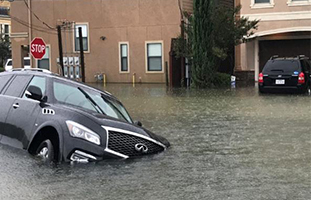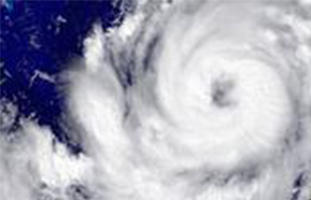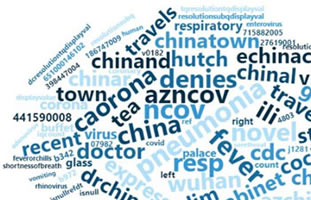NSSP Update – September 2020

A Technical Newsletter for the NSSP Community of Practice | September 2020
The National Syndromic Surveillance Program issues NSSP Update monthly to share the latest Community of Practice activities, technical and program updates, and ways in which syndromic surveillance is improving public health.

MMWR
Primary Indicators to Systematically Monitor COVID-19 Mitigation and Response—Kentucky, May 19–July 15, 2020
Syndromic surveillance data are used by the Kentucky Department for Public Health to help in assessing the state’s mitigation, response, and reopening efforts. Read more.

MMWR
Nonfatal Drug and Polydrug Overdoses Treated in Emergency Departments—29 States, 2018–2019
Syndromic surveillance is improving our understanding of nonfatal drug overdoses involving opioids and other drugs. Expansion of syndromic surveillance will inform overdose prevention efforts. Read more.

SYNDROMIC SURVEILLANCE IN ACTION
Syndromic Surveillance Shows Medical Surge in Dallas–Fort Worth during Hurricane Harvey, 2017
In 2017 after Hurricane Harvey, Texas public health officials used syndromic surveillance to understand and respond to the healthcare service needs of those who evacuated the directly affected areas. Read the story.
Read more stories about how states use syndromic surveillance.

SYNDROMIC SURVEILLANCE IN ACTION
Monitoring Population Changes for Emergency Management Support in Tennessee
Preparing for an influx of evacuees during Hurricanes Harvey and Irma, Tennessee health officials turned to syndromic surveillance to understand the needs of out-of-state patients seeking emergency healthcare. Read the story.

COMMUNITY OF PRACTICE
Community Highlights ▪ 2020 Syndromic Surveillance Symposium ▪ NSSP CoP Election Results
Learn what each subcommittee does to advance syndromic surveillance practice, what’s been added to the Knowledge Repository, and more updates.

TECHNICAL UPDATES
Fall Update to AMC Includes Commercial Lab Data
and Mortality Data ▪ Fall Onboarding Window for
New Sites ▪ Update on Department of Defense and Veterans Affairs Data Sources

Monthly National-level Free-text ESSENCE Queries
Analysts can exercise a high level of customization by using free-text queries. They can quickly code free-text queries and rapidly respond to outbreaks, disasters, and health events that unfold. These word clouds capture free-text queries from a national perspective.

NSSP Participation Map and Coverage
NSSP data covers about 73% of all emergency department visits in the United States. Updates are published quarterly.

| September 15 | NSSP vendor patches in Testing and Development environments: 12:00–8:00 AM ET |
| September 17 | NSSP vendor patches in Onboarding and Production environments: 12:00–8:00 AM ET |
| September 22 (new date) |
NSSP Community of Practice Call (Monthly): 3:00–4:30 PM ET |
| October 1 | Technical Subcommittee Call (Quarterly): 2:00 –3:30 PM ET |
| October 2 | Syndromic Surveillance and Public Health Emergency Preparedness, Response, and Recovery Subcommittee Call (Monthly): 2:00–2:45 PM ET |
| October 5 (new date) |
NSSP CoP Core Committee Call (Monthly): 1:00–2:30 PM ET |
| October 7 | Syndrome Definition Subcommittee Call (Monthly): 1:00–2:00 PM ET |
| October 13 | Urgent Care Subcommittee (Quarterly): 12:30–1:30 PM ET |
| October 16 (new date) |
Data Quality Subcommittee Call (Monthly) 12:00–1:00 PM ET |
| October 20 | NSSP Committee of Practice Call (Monthly): 3:00–4:30 PM ET |
View more calendar details at the NSSP Community of Practice.
